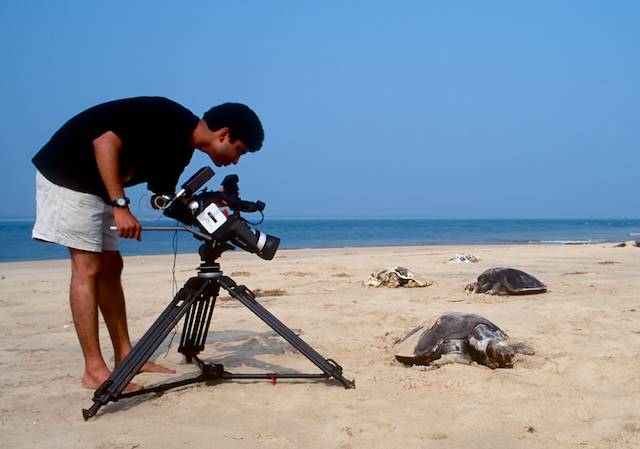
A well-researched film that illustrates a problem and offers practical solutions can be a powerful catalyst for change.
Pictures speak louder than words. That’s a fact. A crisp, well-researched film that illustrates a problem and offers practical solutions can often prod people into action and be a powerful catalyst for change.
Unlike wildlife filmmaking, where the emphasis is to capture animal behaviour and the beauty of nature to the highest standards, and which therefore requires specialized equipment and big budgets, conservation films do not require very high production values and can be produced even with rudimentary equipment and at low cost. The emphasis in a conservation film is on the content and message rather than on aesthetics. While wildlife filmmaking is a very specialized field requiring a great deal of expertise and experience, almost anyone with a good grasp of an issue and a fair understanding of the medium of video can produce a useful conservation film. This article provides a step-by-step overview of filmmaking for the purpose of conservation advocacy.
Researching the issue
- Study the problem first-hand through field visits.
- Talk to experts on the subject.
- Talk to local people.
- Collate important facts and figures from authentic sources.
- Identify workable solutions.
Understanding the medium
To be effective, a film should have a beginning, middle, and an end. It should have:
- An introduction that hooks the audience
- A middle portion that explains the issue clearly, and
- A concluding section that provides solutions.
A catchy title that reflects the subject matter of the film makes a big impact, so it is worthwhile thinking about this carefully.
In an ideal world one would write the script first and then go out and make the film. However, this is not always practical, as films tend to evolve as you go along. Even a rough script is very useful, as it helps achieve clarity of thought. If you have trouble with writing even a rough script, this too can be done after the shooting. However, it is absolutely necessary to make a list of shots before one attempts to make a film. To do this, you need to break down the story you want to tell into a series of shots.
Let’s say your film is about opencast mining destroying a natural ecosystem. Here is a sample list of shots you should have on your wish list:
- Beautiful landscape shots of the natural habitats in the area.
- Shots of some rare plants and animals found in the region.
- A variety of shots of the mining operation.
- Shots of the damage caused to the environment by the mining (eg., siltation of streams or rivers, land slides etc.).
- Interviews with local people affected by the mining activity.
- Interviews with experts.
- Anything else you can think of that is relevant to the story.
Preparing for the shoot
Once you have finished your research, recce (field visit) and consultation with experts, you are ready to shoot your video. But before you go to the field, there are a few things to check.
- Is your shot list ready?
- Are you clear about what you need to get?
- Have you chosen the right seasons for shooting?
- Have you familiarized yourself with your equipment and practiced with it?
- Do you require permission to shoot in the area? (Filming in a restricted area without a permit may invite penalties or charges of trespass).
- Have you assessed the risk to yourself/your associates in shooting the film? (Filming something that someone doesn’t want you to film may lead to seizure of your equipment, physical assault, or both. Assess your risks carefully and be prepared for all eventualities. Making conservation films isn’t for the fainthearted).

 CI is a non-profit, non-commercial portal that aims to facilitate wildlife and nature conservation by providing reliable information and the tools needed to campaign effectively.
CI is a non-profit, non-commercial portal that aims to facilitate wildlife and nature conservation by providing reliable information and the tools needed to campaign effectively.
Older Comments 2
This is really a nice film. Thanks so much for this. This movie teaches lot of things regarding tigers and nature conservation
Good site to learn more about TIGER’S.